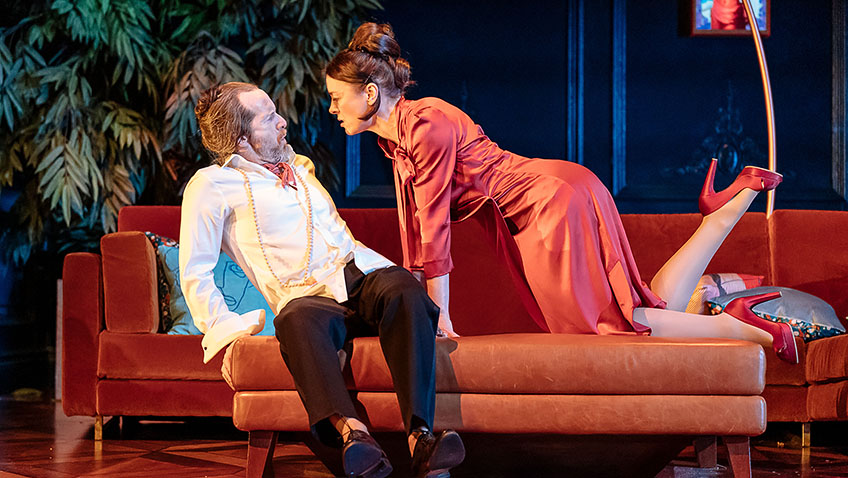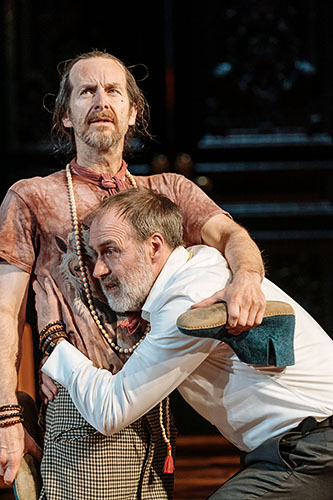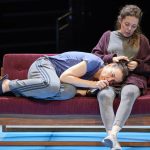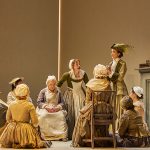Robert Tanitch reviews Tartuffe at National Theatre/Lyttelton
Tartuffe was well received by King Louis XlV in 1664, but condemned by the Church. The Archbishop of Paris said he would excommunicate anybody who saw it or acted in it.
The comedy, however, is not an attack on the Church but an attack on the hypocrites and counterfeiters of devotion and their artificial zeal and fake charity.
The first thing to say is that the National Theatre’s Tartuffe, directed by Blanche McIntyre, is not Moliere’s Tartuffe but a new version by John Donnelly and it is set in modern London and without rhyming couplets.
I might have enjoyed it more had the actors shouted less and if the play had been acted for comedy rather than farce.
The only time I have known Moliere to work in modern dress was when John Dexter directed Alec McCowen and Diana Rigg in The Misanthrope a translation by Tony Harrison at the National Theatre when it was at the Old Vic.
The play has religious, social, sexual and political bite. Donnelly’s emphasis is on the rich being rich and living in luxury and the poor being poor and homeless.
Orgon, unable to tell the difference between a religious charlatan and a genuine holy man, disinherits his family and makes Tartuffe his sole heir. It is not until he actually witnesses him making love to his wife that he realises he has been harbouring an imposter and not a saint.
Kevin Doyle’s besotted, deluded Orgon, nostalgic for the Britain of his youth, feels guilty because he is wealthy and has made his money by dishonest means.
His living room (designed by Robert Jones) includes a painting of Saint Sebastian and a huge vulgar copy of Michelangelo’s David all in gold.
Denis O’Hare’s Tartuffe makes his first appearance before the play begins as a tramp wandering along the first row of the stalls offering the audience daffodils.
Tartuffe makes his stage entrance in his underwear. He is very camp and he does lots of camp things with a bucket of ice. Parasite, imposter, lecher, hypocrite, he, nevertheless, insists he is not a con-man but the real thing.
Donnelly’s point is that Tartuffe may not be the villain everybody has always thought him to be.
The best sight gags are the running gags of unexpected entrances from unexpected places. The best farce is Tartuffe attempting to seduce Orgon’s wife (Olivia Williams).
To learn more about Robert Tanitch and his reviews, click here to go to his website





